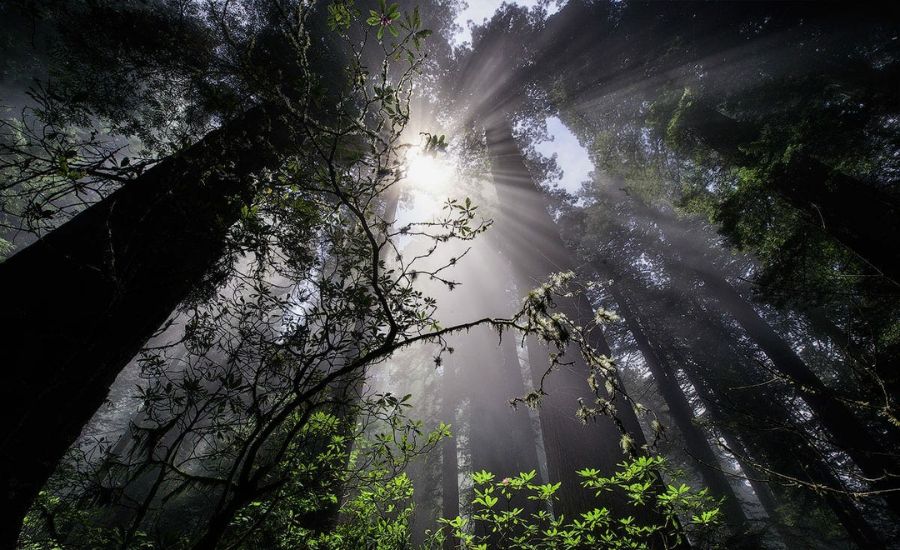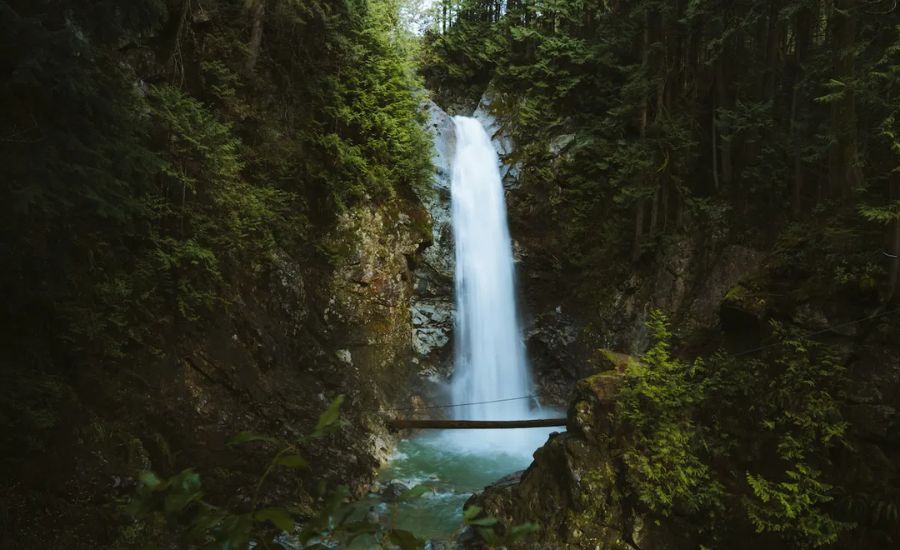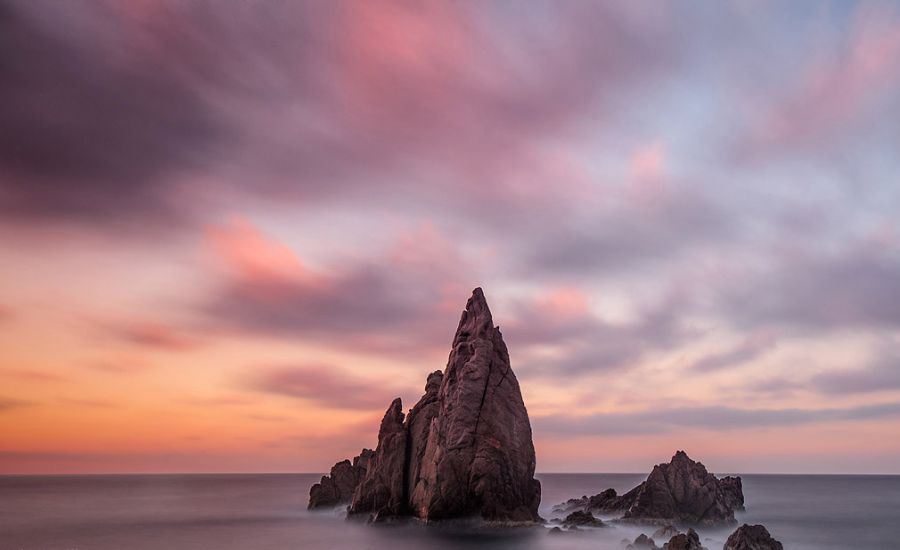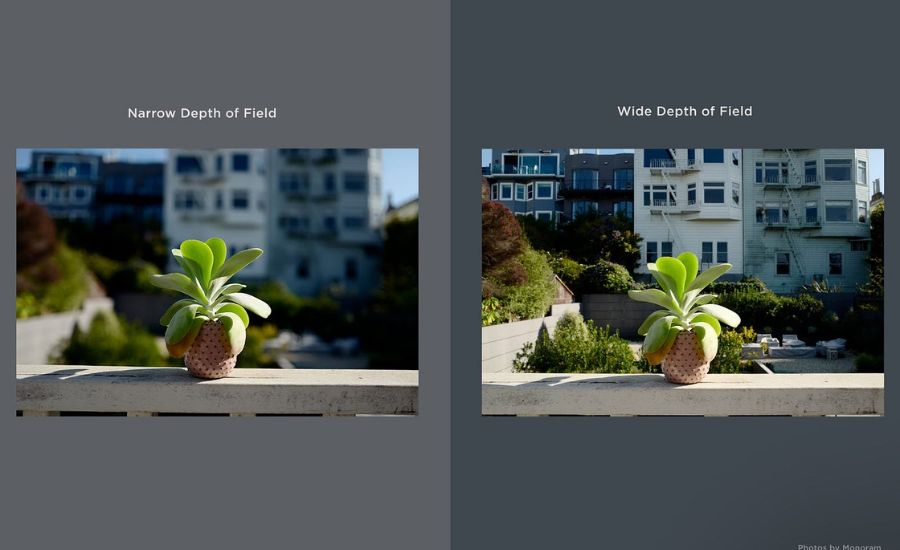Photeeq depth of field Impacts Depth,Successful shallow,Capture Movements & More
Introduction:
When shooting a portrait, one of the most vital selections is figuring out the intensity of subject (DoF). The intensity of discipline refers to the range of the picture that appears in cognizance, and it extensively affects how the viewer reviews and translates the picture. The stage of attention—or lack thereof—shapes the narrative of the photograph, guiding interest closer to particular factors at the same time as blurring others. In this put up, I’ll delve into the elements that have an impact on intensity of discipline, and examine how the choice among a shallow or deep DoF can affect the storytelling of a portrait. I’ll also share some insights on the fashion I’ve been gravitating towards in my personal images
What is depth of field in photography?

The intensity of field (DoF) refers to the location in a photograph that looks sharp and in attention. Every photograph has a selected factor of focus—wherein the digital camera lens is directed—but there is additionally a surrounding region in front of and at the back of that factor that continues clarity. This sharp place is what we name the intensity of field.
The length of this centered location can trade based totally on numerous factors, along with the aperture setting of your lens and the distance between the digicam and the problem. By adjusting both your camera settings and your composition, you may control how plenty of the image stays in attention and what kind of gets blurred, giving you the innovative freedom to shape the visible impact of your picture
What is shallow depth of field?
Shooting with a shallow intensity of discipline (DoF) creates a hanging impact in which most effective a particular plane of the picture is in sharp awareness, while the relaxation of the scene is blurred. According to pro photographer Jeff Carlson, this visual approach is often prompted with the aid of your lens’s aperture placing. A wider aperture, permitting greater moderate to enter, effects in a shallower intensity of subject. This impact is specifically critical even as the usage of low f-prevent numbers, generally beginning from 1.Four to five.6, which enhances the blur within the foreground or history at the identical time as preserving recognition for your challenge.
To collect a shallow depth of vicinity, it’s critical to regulate severa digital camera settings, together with aperture, shutter tempo, focal period, and ISO. A large aperture (low f-prevent) allows more moderate, which means that you’ll be wanting a faster shutter pace to keep away from overexposure. Additionally, the longer your lens focal duration, the shallower your depth of vicinity turns into. Understanding how these settings engage is key to gaining knowledge of this method.
Even if you don’t have get entry to to lenses with extremely-wide apertures like f/1.4, you could nonetheless create a beautiful shallow depth of discipline by means of increasing the gap among your digital camera, subject, and history. For example, if your situation is placed far from the history, you’ll obviously get a softer, more blurred backdrop. Conversely, a topic positioned towards the history—including status near a tree—will result in less separation and a less dramatic blur
What Impacts Depth of Field?

Depth of discipline (DoF) is prompted via several key factors, inclusive of aperture, focal period, and the gap among you and your subject. While sensor length performs a position in composition, it in particular affects how focal period wishes to be adjusted on unique sensor sizes, which isn’t something most photographers manipulate on a normal basis. Therefore, we’ll awareness on the 3 number one elements: aperture, focal length, and issue distance.
- Aperture: One of the maximum not unusual ways to control intensity of subject is via adjusting your aperture. A wider aperture (for example, f/2) will provide you with a shallow intensity of subject, whilst a smaller aperture (like f/eight) will permit more of the scene to remain in consciousness. The larger the aperture, the more the background and foreground will blur out, setting apart the concern.
- Focal Length: The focal period of your lens also has a great impact on intensity of area. Longer focal lengths (including 200mm) naturally bring about a shallower depth of area in comparison to shorter focal lengths (like 24mm). This approach that a telephoto lens will come up with more mentioned historical past blur than a huge-angle lens, assuming all other factors are constant.
- Distance to Subject: The nearer you are on your issue, the shallower your depth of field can be. Conversely, stepping again will boom the depth of discipline, permitting more of the scene to be in attention. This element is particularly enormous in macro snap shots, in which getting very close to your difficulty dramatically reduces the intensity of the problem.
To understand how those factors work together, allow’s take into account an instance: believe you are taking pictures on a whole-frame digital digital camera with a 35mm lens set to f/8, and you’re standing 10 feet away from your mission. In this example, your depth of location would span about 19 feet, which means a signific
Successful shallow depth of field.
As a novice photographer, one of the only and best techniques to emphasise a subject is via the use of a shallow depth of discipline. According to photographer Derek Boyd, it’s a superb device to guide your viewer’s interest to what subjects most in your picture. By maintaining the problem in sharp focus whilst gently blurring the surrounding factors, you may create a visible narrative and make your challenge stand out. This approach allows isolating the important consciousness of your image, drawing the viewer’s eye without delay to it.
Shallow intensity of subject also can be used creatively to spark curiosity. Photographer Stephen Klise explains that by intentionally blurring sure components of the picture, you can inspire visitors to question and explore the less seen elements of the composition, adding intrigue and mystery to the shot. This subtle defocusing can rework an ordinary photo into one that invites more interest and evaluation.
Hannah Concannon, every other photographer, stocks her experience using shallow intensity of area to focus on sudden info. In a latest picture shoot concerning flowers, she experimented by placing small black plastic houseflies in the body, cautiously focusing on them while permitting the rest of the scene to softly blur. This technique may be specially powerful while you want to draw attention to a small, however captivating element that would otherwise go neglected.
Artist Cheryl Medow uses shallow intensity of field to capture birds of their herbal environments, ensuring the birds are sharp and clean even as the heritage dissolves into a gentle blur. This technique permits her to get rid of distractions and create visually striking compositions, even permitting her to craft surreal composite images that blend herbal beauty with artistic imagination.
Deep vs shallow depth of field: What’s the difference?
Images with a huge area of sharpness are called having a deep depth of discipline. In these pics, tons of the scene, from the foreground to the history, remains in awareness. This fashion is usually used in landscape pictures, wherein shooting every element in a scene is fundamental to growing a compelling photograph. A deep intensity of subject allows the viewer to enjoy the whole scene with readability, making it perfect for showcasing expansive vistas or problematic landscapes.
For instance, in a deep DoF image, the objects close to the lens and people inside the distance seem crisp and clean, contributing to a feel of intensity and detail.
In contrast, pix with shallow intensity of subject characteristic a much narrower attention quarter. This impact is straightforward to recognize due to the fact the concern is sharply in attention even as the history blurs out into a smooth, creamy bokeh. This technique is in particular popular in portrait pictures, in which the intention is to attract interest to the issue at the same time as minimizing any distractions from the historical past. However, shallow depth of field isn’t always confined to graphics. It’s additionally often utilized in macro images, street photography, and photojournalism, in which setting apart the challenge can assist convey emotion or emphasize precise information.
In precise, the choice between deep and shallow intensity of field in pictures affects how the viewer engages with the picture. Deep DoF is amazing for landscapes where you want the entirety in attention, while shallow DoF is ideal for photos or conditions where separating the challenge and creating a blurred history complements the visible effect
Capture Movements In The Landscape

You may anticipate that landscape photography is all about taking pictures stillness, however in fact, maximum landscapes include a few shapes of movement. Whether it’s the waft of water, the sway of bushes inside the breeze, or birds hovering through the sky, there are numerous ways to introduce movement into your panorama photos. By taking pictures of even the smallest actions, you could bring a feeling of drama and emotion in your pics.
Incorporating movement on your panorama shots is easier than you might assume. Consider the natural factors around you—waves crashing, rivers flowing, leaves rustling inside the wind, or clouds drifting throughout the sky. All of these dynamic elements can upload depth and intrigue in your image. To efficiently seize those actions, you will often need to apply an extended shutter speed, permitting sufficient time for the motion to end up visible in your picture.
Depth of field and lens aperture size: an overview
The relationship between attention points and the background performs a vital function in determining the intensity of field (DoF) in pictures. When there’s an enormous distance between the challenge in cognizance and objects similarly away, you begin to technique a shallow intensity of area. This occurs due to the fact light travels in direct lines, and objects which can be further from the focal point have a tendency to lose sharpness as they fall outside the focused region.
This impact will become even more substantial whilst the use of smaller apertures. A smaller aperture creates a slender range of sharpness, which leads to a blurred heritage. In contrast, the use of a wider aperture allows greater light to enter the lens, supplying a more intensity of discipline and allowing distant items to hold greater in their sharpness earlier than they begin to lose awareness.
Therefore, accomplishing a shallow intensity of field is motivated by means of each aperture size and the space of objects from the focus. As you operate a smaller aperture, the place beyond the focal aircraft progressively becomes greater blurred. The visible representation of this is clean: objects beyond the point of interest factor emerge as increasingly more out of cognizance because the aperture length decreases. This dynamic facilitates create the pronounced blur and sharp problem isolation feature of shallow intensity of field images
Depth of field and aperture size: technicalities
While a shallow depth of area is typically linked to wider apertures, the connection among aperture length and depth of discipline isn’t continually linear. Here’s the way it works:
Wider apertures (like f/1.Four to f/5.6) create a shallow intensity of area, wherein the situation is in focus, and the historical past becomes increasingly blurred.
However, as you continue to slender the aperture (like going to f/22 or f/32), the intensity of area certainly increases, and greater of the photo turns into sharp from the front to lower back.
This approach that the use of a completely wide aperture does assist reap a shallow intensity of discipline, but past a certain point, because the aperture receives smaller, the depth of field will evidently deepen. For example, with an aperture of f/32, more of the scene can be in focus than with an aperture of f/1.Four, despite the fact that each setting is used to manipulate the sharpness of the photograph. Thus, the key’s to find the proper balance that achieves the preferred depth of discipline in your image.
Facts:
- Depth of Field (DoF) refers to the zone of sharpness in an image, influenced by the aperture, focal length, and distance between the camera and the subject.
- Shallow DoF isolates subjects by blurring the background, commonly used in portraiture, macro photography, and street photography.
- Deep DoF is used to capture wide scenes where much of the image, from foreground to background, is in focus, like in landscape photography.
- The aperture size (f-stop) directly affects the depth of field—wider apertures (like f/1.4) create a shallow DoF, while smaller apertures (like f/8 or higher) produce a deeper DoF.
- Focal length: Longer focal lengths (e.g., 200mm) produce a shallower DoF compared to shorter focal lengths (e.g., 24mm).
- Distance to subject: The closer the subject is, the shallower the depth of field. Moving farther away increases the depth of field.
- Landscape photography can convey emotion and drama by capturing movement, such as flowing water, trees swaying in the wind, or drifting clouds.
- The balance of aperture settings is crucial for achieving the intended visual effect in photographs.
Summary:
In this article, the concept of Depth of Field (DoF) in photography is explored, particularly how it impacts storytelling in portraiture. Depth of field refers to the zone within a photo that appears sharp and in focus, influencing the viewer’s focus and perception of the image. It can be shallow or deep, based on various factors such as aperture size, focal length, and subject distance.
- Shallow Depth of Field: Achieved by using a wider aperture (low f-stop values like f/1.4 to f/5.6), it isolates the subject by blurring the background. This technique is ideal for drawing attention to the subject and is commonly used in portraits and macro photography. It can also add mystery or intrigue by subtly defocusing certain parts of an image.
- Deep Depth of Field: In contrast, a deep depth of field keeps most of the scene in focus, which is often used in landscape photography to showcase every detail from foreground to background. A small aperture (high f-stop values like f/8 to f/32) is typically used to achieve this effect.
- Impact of Aperture, Focal Length, and Distance: Shallow or deep DoF is influenced by your camera settings. A larger aperture (wider lens opening) results in a shallow DoF, while a smaller aperture creates a deeper DoF. The focal length of your lens also plays a significant role, with longer focal lengths creating a shallower DoF. Additionally, the closer you are to your subject, the shallower the depth of field becomes.
- Incorporating Movement: Landscape photography isn’t just about stillness; capturing movement, like flowing water or wind-blown trees, can add drama and emotion to the scene. Achieving this requires the use of longer shutter speeds to properly convey movement.
- Balancing Aperture Settings: While wide apertures create shallow DoF, smaller apertures increase the depth of field. Finding the right aperture setting is essential to achieving the desired depth effect for the scene or subject being photographed.
FAQs:
1. What is Depth of Field in photography?
Depth of field (DoF) is the range of distance within a photograph that appears in focus. It is influenced by factors like aperture size, focal length, and distance from the subject. The greater the DoF, the more of the scene is in focus, while a shallow DoF isolates the subject and blurs the background.
2. How does aperture affect Depth of Field?
A wider aperture (lower f-stop number, like f/1.4) creates a shallow depth of field, where only the subject is in focus and the background becomes blurred. A smaller aperture (higher f-stop number, like f/8 or f/16) increases the depth of field, keeping more of the image sharp from foreground to background.
3. What role does focal length play in Depth of Field?
Longer focal lengths (e.g., 200mm) result in a shallower depth of field, while shorter focal lengths (e.g., 24mm) increase the depth of field. A telephoto lens will give you a more pronounced background blur compared to a wide-angle lens.
4. How does distance to subject impact Depth of Field?
The closer you are to your subject, the shallower the depth of field. Conversely, the farther you step back, the greater the depth of field, meaning more of the scene will be in focus.
5. When should I use shallow Depth of Field?
Shallow DoF is ideal for portraiture, where you want to isolate your subject and blur distracting backgrounds. It’s also great for macro photography to focus on small details and for street photography to highlight certain elements in a scene.
6. Can I capture movement in landscape photography?
Yes! Landscape photography can incorporate movement, such as flowing water, wind-blown trees, or drifting clouds. To capture this, use a longer shutter speed to allow motion to be captured in the frame, adding dynamic elements to your landscape shots.
7. How do I control Depth of Field in my photos?
You can control the depth of field by adjusting your aperture, focal length, and distance from the subject. A wider aperture (low f-stop) will create a shallow DoF, while a smaller aperture (high f-stop) will give you a deeper DoF. Adjusting these settings based on your creative goals allows you to shape the storytelling of your photograph.
Read More Information About Blog At https://royalprofile.org/



